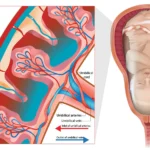White bumps or spots on nipples are clogged milk pores that occur in breastfeeding women. Milk usually flows from small openings on your nipples. When one of the pores is blocked because of milk, it results in a condition called white blebs.
These clogged pores can sometimes appear as yellow or pinkish. Sometimes the channels connecting the pores at the back of the nipples may also get blocked. White blebs can cause a lot of of pain and discomfort. This is common in most lactating women and rarely indicates a critical condition.
White blebs or bumps may last for a few days or weeks. The blockage may later develop into a condition called mastitis, a breast infection in which you may develop inflammation and fever. However discomforting this condition may be, it is not a reason to stop breastfeeding. Moreover continuing to breastfeed helps get relief from white blebs.

Causes of white bumps
- If your baby is unable to latch properly when nursing, you may end up with clogged ducts, as some pores may not get emptied, causing the milk to harden.
- Tight fitting bras or underwire bras can put pressure on the nipples and cause blockage. Seat belts and baby carriers, if worn too tight across your breasts can also cause clogged pores.
- White blebs may also be caused in women with an over supply of milk. If the production is more, compared to what your child feeds, you may end up with closed ducts.
Treatment of white bumps
- In most cases, white blebs go away on their own, without having to do anything. As the baby keeps sucking on your nipples when nursing, the pressure from this helps release the blockage.
- Placing a warm compress on your breasts, right before you feed, helps in softening the blockage and releasing it. You may use a warm, wet cloth as well.
- Avoid wearing anything tight over your breasts.
- Make sure to empty your breast, before switching to the other side in order to avoid clogging.
- Try dangle feeding your baby. This is a method of bending down over your baby to breastfeed, so that gravity may help do its work of dislodging the blockage.






